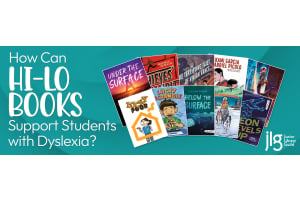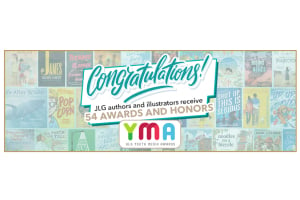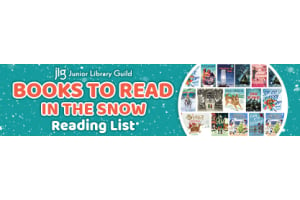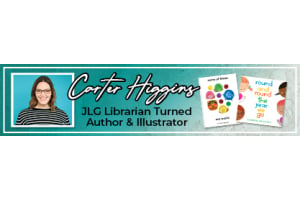Honoring Native American Writers: Q & A with James Bird

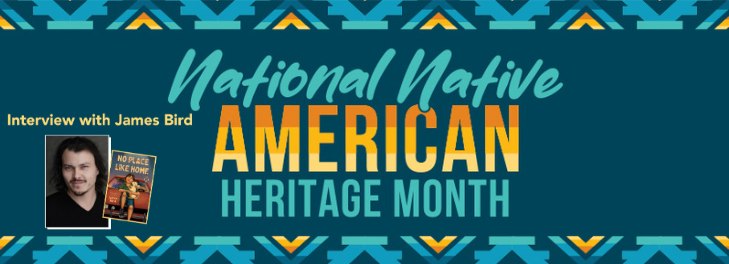
Introduction
Middle school can be tough, especially when you’re living out of a car, fighting to keep your Native American Heritage alive, and dealing with your mean brother, Emjay. James Bird, author of the JLG selection No Place Like Home, takes readers on a bumpy road trip through the ups and downs of experiencing homelessness at a young age. Told through the lens of an optimistic, twelve-year-old protagonist—perhaps based on a young James? —this middle school novel will encourage readers to practice resiliency, form their own identities, and preserve their heritage and culture— even in the most destitute of times.
“Middle schoolers are kids, but they are also the ones who are actively changing the world,” said James.
“If you think about adults, odds are that if they aren’t changing the world right now, then it probably won’t happen, but kids have so much more time to make an impact. I want to reach kids who feel alone—I want them to read No Place Like Home and think to themselves, ‘Oh wow, someone else has been through this too.’ You know, I was always the smelly kid at school because it was hard to bathe when we were living out of a car. I want the smelly kids to read this book and then maybe they won’t feel so alone. If they lack hope or optimism, maybe I can give them a taste of it, you know, maybe I can encourage them to keep going. If they keep going, they will succeed in life—we can all survive the tough times and come out better on the other side.”
If you or your readers are looking for a reason to keep going, to push on even when it feels like life itself wants to keep you down, then it’s time to add No Place Like Home to your library collection!
Q: No Place Like Home is “a trip”—like Opin would say—filled with themes that explore forgiveness, ancestral ties, human resilience, and hope. Where did your inspiration come from? Were parts of your story autobiographical?
A: A lot of this book is autobiographical—this is basically my childhood. The journey was the same for me and Opin: my family was really poor, we sometimes lived in a car, motel, shelter, or a relative’s or friend’s place, and we ended up in Orange County, Los Angeles. Just like at the end of the book, when Opin and his family find an apartment, that was my family’s end to homelessness in real life; we got to live in that apartment in Tustin that had eleven walls. That was actually the original title of No Place Like Home, “These Eleven Walls”.
As I grew up, I didn’t really think too much about my situation, or think it was odd or abnormal. I was a kid, so I had nothing else to reference. Everyone I knew was poor and most people my age didn’t have their dads around… but even as a kid I was always so optimistic and because I had my imagination, I never felt too depressed. I was always so hopeful, and it helped that my mom turned our situation into a game—everything in my life was a game, so that was one way in which I invited readers into my story: I wanted to let them play the game of life with me.
Q: My favorite element of your story were the characters; you fall in love with each of them, instantly, and for their own uniqueness. There’s Opin (who is witty and opportunistic), his mom (who is a free spirit and a preserver of Native American culture), Emjay (who is overly angry yet secretly loving), and Ani (who I imagine is just such a cute pup!). Who was your favorite character to write?
A: I hear a lot of people's favorite character in my book is Emjay, and weirdly enough, he was my favorite character to write. Growing up, I was terrified of my brother. He was always the good-looking and athletic one out of the two of us, and I was the quiet, not-so-bright, chubby kid. My brother beat me up all the time, and if I got jumped or beat up by somebody else, he would go beat that person up, but then beat me up for losing the fight. He was such an odd character in real life, and I didn’t understand him as a kid. Writing this book was a way for me to see things from his point of view; it helped me understand why he was so mad and always felt the need to run away.
Now that my brother is an adult, it’s a totally different story—he’s not violent anymore, in fact, he’s a really nice guy. If you had asked anyone when we were kids (including my mom) whether my brother would make it until his 21st birthday, we would have said obviously not—no way. We didn’t have a ton of hope for him, but he’s still here and is a good guy now. He even has cats.
*chuckles*
I’m not sure if he’s read my book yet…
Q: Opin is a twelve-year-old boy who is facing some pretty harsh realities in life: experiencing homelessness, fighting assimilation, educating himself while living in a car, not being able to create lasting friendships, etc. Why is important to share these difficult and uncomfortable topics with your young readers? What do you hope readers learn from Opin’s resilience?
A: I’ve been visiting a lot of schools lately where I get to talk about my book with students or teach a lesson, like a poetry free-write. I just went to an Indian school in Oregon last week, and I had no clue that Indian schools still existed; its similar to a boarding school where kids sleep and live at school, and the border of the perimeter is decorated in barbed wire—it was crazy.
When I met these students, I understood that most of them were poor, but what struck me most was their creativity. I got to know the kids and saw the untapped potential they held of being something so needed in this world, but what they lacked was hope, you know? They lacked a vision, an opportunity, a door to knock on, and that broke my heart because I could relate to those feelings as a kid. I found my way, thankfully, but it was hard. I hope those students can read my book and think to myself, “The things I want are possible” or, “I’m possible.” Maybe they just need to know that their dreams and ambitions are possible.
I held a creative writing workshop for students at this school and in the beginning, no one wanted to participate in the lesson. I was trying to get to know them and make them feel comfortable, so I was using a lot of humor, and I finally broke them into participating. The assignment was simple, I asked the class, “If you could be an animal for one day, what would you be?” These kids had never really done anything creative before, and they didn’t really want to share their writings aloud, so I decided to tell them that the calvary was coming, and we all needed to do something because we’re scared and we must fight for our way of life! I told the class that I needed just one person to volunteer and say they would fight against the calvary—because I knew that once one person stood up, others would join in— so one student stood up and said, “I’ll do it, I’ll fight the calvary by reading my poem!” Her hands were shaking as she read her poem aloud, and it was so poetic—so good. After she read her poem, almost all the students raised their hands to share their writing. This blew me away—every student in that classroom read their poems. Some students wanted to be birds so that they could fly away, fishes who could swim away from their problems, or lambs so that they could eat grass for a little bit but then give their bodies to people that are hungry. I thought to myself, jeeze, if these students grew up and decided that they want to be authors and got the right the support and nurturing they needed, they would all be so successful in their endeavors.
Visiting schools and working with students gave me a whole new purpose in my writing. When students read my book, I want them to know that just because what they are experiencing now is really hard, does not mean the rest of their lives has to be this way. It could have been easy for me to give into the hopelessness, desperation, anger, or crime in my youth, but I chose not to, and I hope my readers choose to do the same. Maybe No Place Like Home will help readers stay on a reassuring path where they can always choose to be the best version of themselves.
Q: Throughout the book, we learn that Opin’s name does not mean “adventure seeker”, like his mom told him, but rather, it means something completely different! Why do you think our names are or are not so closely connected to our identities? Do you think people have the power to change parts of their identity?
A: Some people may try and put you in a box, and a lot of people stay in that box because they think others know better than them or maybe they have low confidence. Unfortunately, a lot of people stay in that box. My whole point with giving Opin his name was to remind readers to jump out of that box—don’t become trapped inside it, or don’t give into labels. I was called a lot of things as a kid, and if I clung to those, I would probably be miserable.
When it comes to names, my mom has called me Bird my whole life and my brother has always called me Hank because of some joke. No one called me James until I turned eighteen, and to this very day, my wife still calls me the nickname she gave me when we first met, Pirate (because I looked like a pirate). I got teased a lot as a kid, and this energy just propelled me to be who I really wanted to be; their tormenting encouraged me to shape my own identity. I learned that I could change who I was every single day, and that there was nothing wrong with that. You’re you, the only one of you that is on this earth in existence; there will never be another you.
When Opin finds out what his name means in Ojibwe, he could get sad and think to himself, “I’m a stinkin’ potato?” or he can take that information and give it a whole new meaning. I think identity is a very, very strange thing that people try to pin down, and yet, it’s the one thing we can probably never pin down. There are parts of me that existed when I was a kid that don’t exist now; there are new parts of me, things that are different—a whole new skin. We change our skin every seven years you know, shedding and pealing and becoming new. I think that’s really beautiful—we become new all the time. We can’t listen to others who downplay our titles, names, ethnicities, or genders, because we have the power to decide those things, not anyone else. No one can tell you who you are—you tell the world who you are. That's the cool thing about having an identity, you get to reimagine and reinvent it as often as you’d like.
Q: Tell us more about why you chose to teach readers about the Ojibwe language throughout your book. What did the translation process look like? Do you speak Ojibwe?
A: I grew up learning words from the Ojibwe language here and there, just like Opin. Now that I'm older, I have a lot of books on the subject, and I follow Ojibwe people that teach seminars. I’m currently trying to teach my son Wolf some Ojibwe words and since he’s five years old, his brain is like a sponge! It’s cool for me to teach him, because once we practice the words, he’ll remember it and know it, and hopefully he’ll build his vocabulary. Wolf in Ojibwe is “ma'iingan”, and my son will actually answer to that sometimes. We’re both learning the language of our ancestors together.
If I don’t share the Ojibwe language with my readers, it goes away, and it could disappear forever. Ojibwe is such a beautiful language that is filled with sacred meanings. For example, in English, when we say, “old person”, we might convey a negative connotation, but in Ojibwe, the word is held with such high regard because age conveys that the person has lived long enough to travel, to connect, and to be with the world for so long; it’s a compliment. There are other “throwaway” words in English that when you look them up in Ojibwe, you might think to yourself, “Wow, that’s a really beautiful way to look at the world.”
Sharing Ojibwe words with readers is my attempt at keeping my ancestor’s language alive, and if one reader shares it with a peer, even better. We keep language alive by speaking it and sharing these moments with others.
Q: Has there been a time in your life where you have felt silenced for being Native American? What advice would you offer to your Native American readers who want to share their stories, but may feel hesitant to use their voices? Overall, how does your Native American identity shape your writing?
A: Wherever me and my family went—no matter what neighborhood—we were always the only Native American family. In my youth, a bill was passed where kids from low-income housing could take a bus route to a better school district, and so I embarked on that journey. When I went to this school, the population was predominantly white, and it was weird because if there was one black kid or one Mexican kid there, we would cling to each other and become friends instantly. This is where I discovered racism for the first time in my life. Mostly, it was the parents of the kids at my new and “better” school; they didn’t want their kids hanging out with me. I was not a bad kid; I was just a kid. I felt silenced in the way that I never felt welcomed.
There’s another memory I have where I’m older, and tan in the summer with long hair and tons of necklaces. Outside of California, in places like Utah or Arizona, I would get harassed by cops on my appearance alone. I’ve been thrown on the ground by a police officer where they cut off all my necklaces and threw me into jail. Eight hours later, when they let me go, I asked the officer what I was charged with. They told me, “Nothing, you were charged with nothing, but we have a real problem with the Navajo around here.” That baffled me—I wasn’t even Navajo. I felt scared to say I was Native American, in any capacity, and that silence was deafening.
Every story I write and every film I direct will be a Native American story because I'm Native American. Maybe my story isn’t about Native Americans, or it doesn’t star Native American actors and actresses, but it will be a Native American story because I wrote it. I love my heritage and I want to make my ancestors proud because they were storytellers and they shared their words for thousands and thousands of years without a book; they did it through their voices, passing stories down from generation to generation. I feel like I’m one of the many people who gets passed the baton and then it’s my turn to run this leg of the race. I think about that at my school visits, like okay, whose turn is it to take the baton and run?
Q: Tell us more about your screen writing and directing career! How does screen writing differ from writing a book like No Place Like Home? Which artistic endeavor do you enjoy most?
A: Now that I write books, screen writing seems simple. I think of screen writing like a train on a train track. The writer is the train, and they just have to go from the beginning to the end in a straight line. You don’t talk about what things look like, or the smells, or the thoughts of the characters, instead, it’s just dialogue, dialogue, dialogue, dialogue. A screenplay is roughly ninety pages and it's one page a minute—so your writing must be snappy. You want every page to have enough momentum to move on to the next page. You let the reader imagine all other stuff, but it's hard to get lost because there's a three-act structure acting as your train track.
When you’re writing a book however, there is no train track. Writing is like riding a horse that you’ve never ridden before. Every book, every adventure is new and different; you can’t do the same thing twice. When you’re on the horse, you can go left, right, up, down, over to the side—anywhere! You jump into the novel and that’s where you describe the smells, the feelings, what everything looks like. So, it’s pretty easy to get lost in this writing process, you can ride in circles or go the wrong way—that’s why I think writing a book is more exciting than writing a screen play. It's far more difficult to write a book, and it takes much longer, but when you hit the end, you feel way more accomplished—like you just went on this huge journey with your horse and these new characters that you know now by heart. I enjoy writing both screen plays and books, but I love watching characters develop throughout my stories. Writing is also much more therapeutic because in screen writing, you want a cool character and you want him to do cool things, and you want snappy dialogue to push the story along, but with books, you have time to sit and think.
Q: What projects are you working on currently? Any upcoming books in your future?
A: I'm writing two books at the same time right now. One is called Wolf Club— another middle school novel—and that one just sold to Macmillan, so I’m super excited about that one! The other book is the weirdest thing I’ve ever written—nobody knows about it, not even my editor. I’ll just call it The Strangest Story for now… I’ve been inspired to write this story from some of my school visits that I’ve been going on, because people have been opening up to me and sharing their stories. I think to myself, “Wow, my stories have actually had an impact on people,” and it’s really rewarding to see that. The humbling part is, it didn’t have to be me—I’m not that special— these students just needed someone to talk to. I love that it could be me to pull stories from these young, talented writers and they have really impacted me in the process.
Q: How can librarians and readers connect with you?
A: Check out my website, social media channels, or schedule a school visit by emailing me!
- Website
- Email me for School Visits at [email protected]
- Add No Place Like Home to my JLG Book Box




